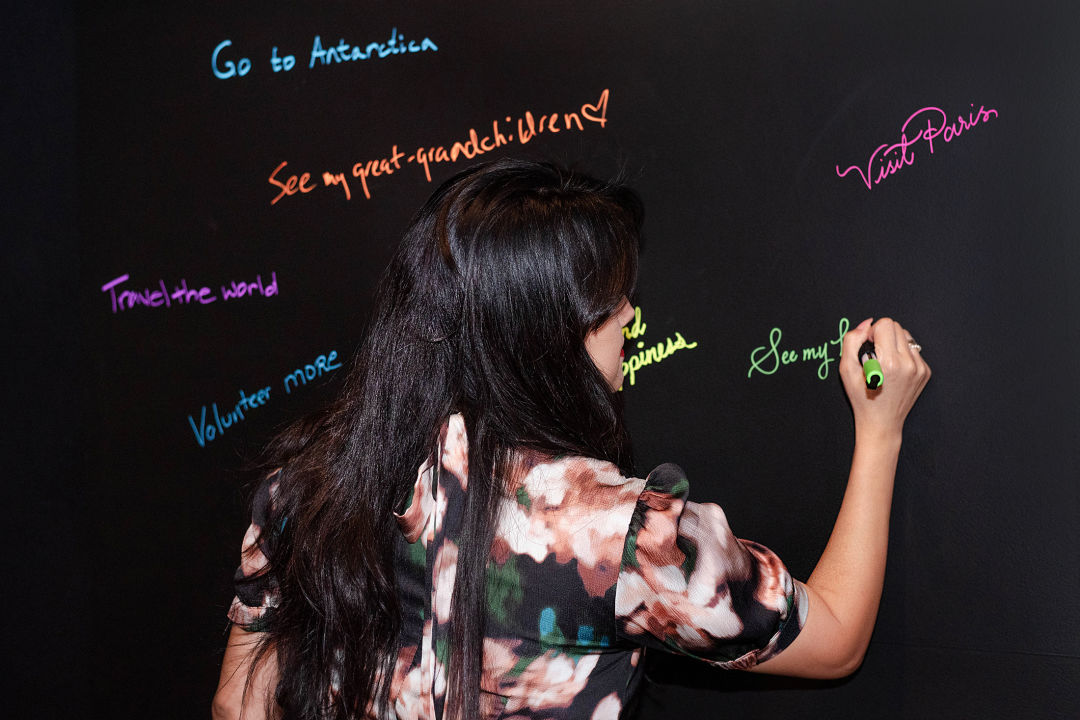The Houston Health Museum Puts Cadavers on Full Display

Houstonia’s The Must List tells you about something going on in Houston that you absolutely cannot miss.
Turns out, horror movies might exaggerate just how much viscera the human body contains. But antismoking PSAs? They are definitely telling the truth about how cigarettes shrink your lungs and tint them a gnarly black shade. It’s possible to see this degradation in action (Inaction? A little death pun there for you.) thanks to the John P. McGovern Museum of Health and Medical Sciences. Its core mission revolves around educating the public about how the human body works in all its ooey-gooey glory, making it an ideal venue for the world premiere of Body Worlds 101: The Core of Life, now on view until January.
“It’s the first time that this exact collection of specimens has been seen anywhere, and the reason we call it ‘101’ is because it’s really quite all-encompassing,” says Ella Hohmann, a science communication specialist at the Health Museum. “Everything from your cardiovascular system to your digestive system, your nervous system, reproductive system: There’s something in here about all of those. It’s really a great way to learn about all these different parts of the body in one.”
Houstonians should be at least passingly familiar with the traveling Body Worlds series of exhibitions. It stops through the city every few years, usually at the Health Museum or Houston Museum of Natural Science, often heralded by billboards of a skinless man holding a running position. He’s real, too. Every display in Body Worlds is.
Since 1995, German physicians Dr. Gunther von Hagens and his wife, Dr. Angelina Whalley, have designed and created plasticized human cadavers to curate for educational displays that eventually go on tour throughout the world. Most of the bodies donated come from Germany, and right now there’s a global waitlist of over 22,000 people hoping to make themselves the source of valuable anatomy lessons after they die.
The plastination process developed by von Hagens involves removing all moisture from the body and replacing it with a polymer, which eventually seeps into the remaining tissues in the bones, muscles, and organs for preservation. Hohmann says the resulting models presumably last “indefinitely,” but there’s no real way of measuring their longevity yet. She also finds them far more helpful than when teaching museum visitors about anatomy, as opposed to the familiar plastic classroom models.
The Health Museum came to host the Body Worlds 101 world premiere after noticing some open space on its gallery calendar. Staffers worked directly with the Body Worlds team to create a unique new showing that takes viewers on a frank tour of the different systems that power our day-to-day existence.

“There is no substitute for the real thing. Everything from the coloration to proportions—I think that’s something that is just really hard to replicate,” Hohmann says. “…I always personally find it really humbling to walk through this exhibit and know that these are real human remains. It gives me a much greater appreciation of my body and what it can do for me, and how I can move through space and time and live my life.”
Despite the artistic flair sprinkled throughout Body Worlds 101—there are three full cadavers arranged in ways just as sculptural as they are instructional—the intent is to offer straightforward lessons. Many of the displays give a glimpse at injury and disease. Some of the first specimens encountered familiarize museumgoers with what normal, healthy joints look like. Then, they’ll come across a whole leg with a metal knee replacement. Hohmann believes it may have been the result of “advanced osteoarthritis,” and notes how these juxtapositions facilitate a deeper knowledge of different health conditions, including their prevention and treatment.
In the section devoted to the respiratory system, there sits a strong, robust set of lungs. Were they suddenly pumped full of blood to bestow a rich red color to the now whitened tissues, one could easily imagine them expanding and contracting with regular breaths.
Next to them is a pair of lungs extracted from a smoker.
Diagrams and models truly do not capture the veritable horror show of organs shriveled and blackened from inhaling so much tar and nicotine. The diseased lungs in Body Worlds 101 lost so much mass that both could almost fit into one full-sized healthy equivalent. Their color recalls the aged rot of a putrefying zombie straight from a scary movie that invested well in its makeup department. This particular set also sports a lump of bronchial carcinoma—even if the donor didn’t die from cancer, they suffered from it.
Stark visuals like this make it possible for visitors to discern the difference between genuine warnings about the hazards of smoking and consuming too much sugar versus out-and-out medical lies. Misinformation proliferates on the internet, and sometimes it can be challenging to parse reality from myth when the ones spreading the fabrications hold authoritative positions—Health and Human Services, for example, promotes definitively debunked conspiracies about vaccines. Strong, science-backed health education is always a necessity, but it seems more urgent now.
Vaping is often touted as a safer alternative to cigarettes. It is, but safer doesn’t equate to safe. The smoker’s lungs in Body Worlds 101 could just as easily have come from a vape user. Teaching critical thinking in this anatomical context could very well save lives, or at least improve them. “I think one of the best ways you can do [your body] justice is by learning about it and actually seeing [that] this is what’s going on inside of me and learning to take care of it,” Hohmann says. “[Body Worlds] is a great way to start to learn.”

A black writing board concludes the exhibition. Here, museumgoers are invited to take a colorful pen and write their own wishes for their lives. Many express a desire to strengthen their spiritual connections, some to travel. Others want love and friendship, and a few cheeky visitors have slipped in at least 12 drawings of Bill Cipher from the animated series Gravity Falls. It’s a reminder that, as humans, we hold so more in common than mere physical machinations. “You’re walking through this gallery of bodies, and then just taking a moment to be humble and think about [how] you only have one life in this body,” Hohmann says. “What do you want to do with it?”
Know Before You Go
Body Worlds 101 is running at the John P. McGovern Museum of Health and Medical Sciences until January. For additional information, including where to purchase tickets, visit the website.
1515 Hermann Dr




